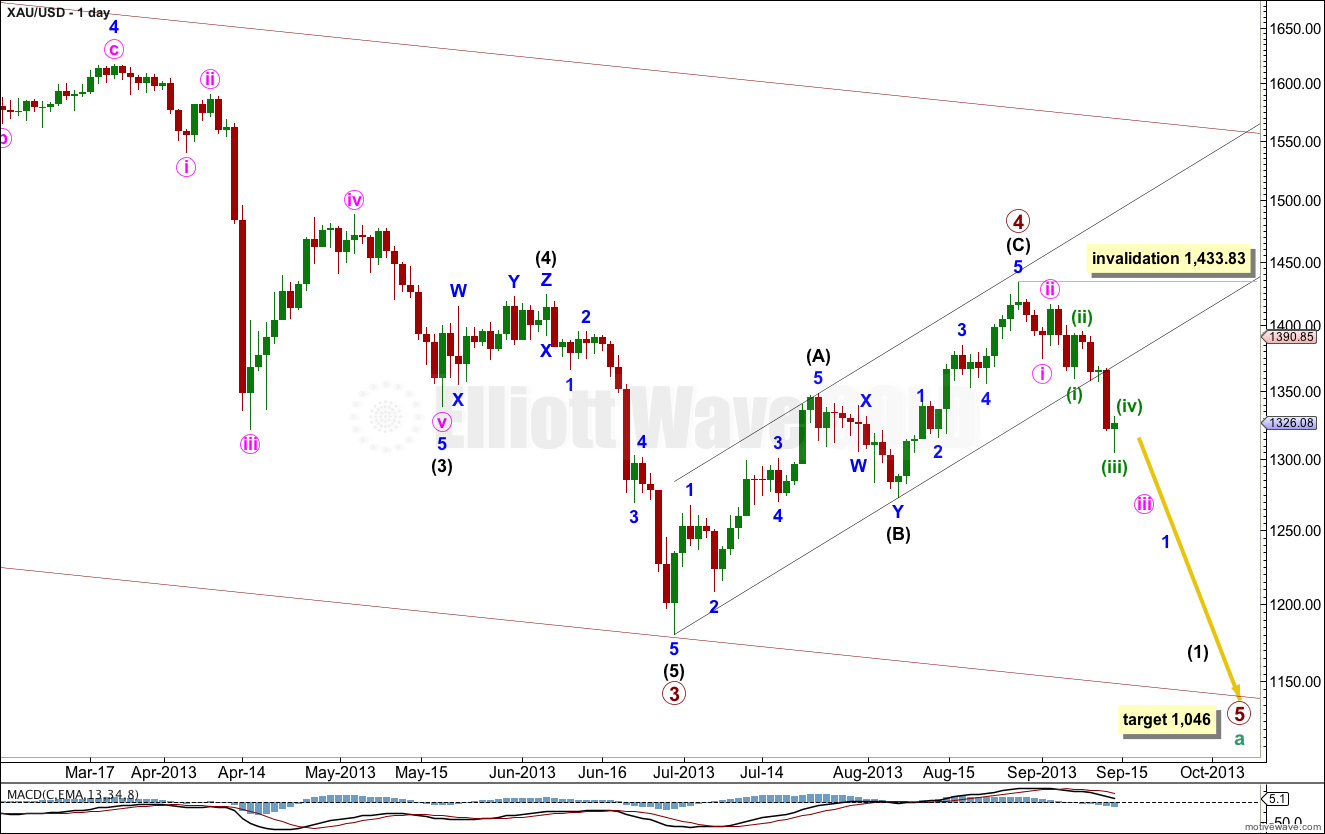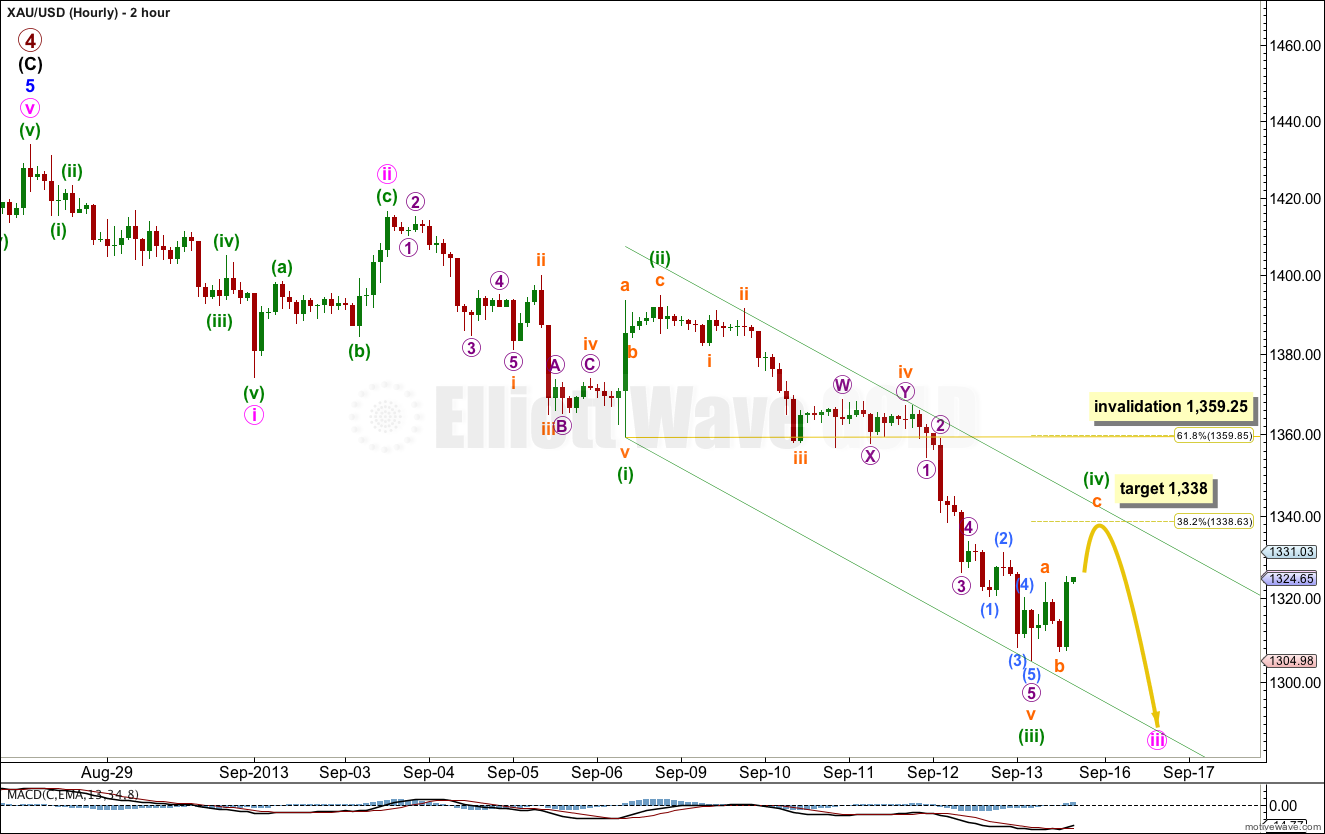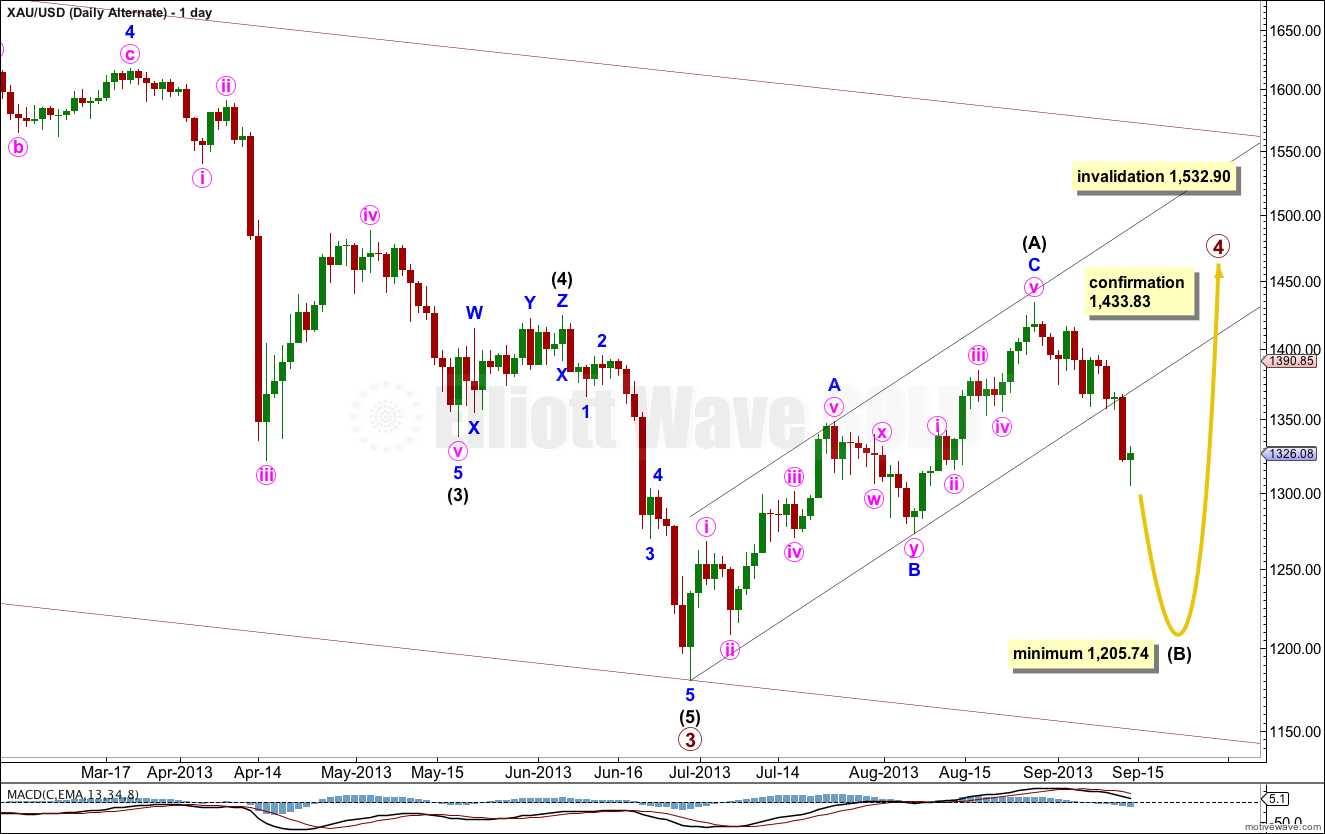Last analysis expected downwards movement to a short term target at 1,308. Price reached down to 3.02 below the target before turning upwards, but it did not manage to stay within the narrowly drawn channel on the hourly chart.
The wave count remains mostly the same.
Click on the charts below to enlarge.
We now have a clear breach of the parallel channel containing the upwards wave labeled primary wave 4. This movement is now confirmed as a completed three wave correction. The next wave down has begun.
Within primary wave 4 intermediate wave (C) is just 7.08 short of equality with intermediate wave (A).
At 1,046 primary wave 5 would reach equality in length with primary wave 1.
I have today adjusted the wave count within the start of this new downwards movement. It is more likely a series of overlapping first and second waves, rather than a leading diagonal. This resolves the problem of the shallow correction; leading diagonals in first wave positions are normally followed by very deep second wave corrections. This labeling today has a higher probability because it is much more common than a leading diagonal.
Minor wave 3 has not passed the middle yet. We should see an increase in downwards momentum.
Within primary wave 5 no second wave correction may move beyond the start of the first wave. This wave count is invalidated with movement above 1,433.83.
Within this new downwards movement we may have two overlapping first and second waves to start, with the middle of the third wave now completed.
Minute wave iii may not exhibit a Fibonacci ratio to minute wave i. At 1,260 it would reach 2.618 the length of minute wave i, but I would rather calculate this target at minuette wave degree.
Minuette wave (iii) is just 2.6 short of 1.618 the length of minuette wave (i). Minuette wave (v) would reach equality with minuette wave (i) if it is 57.20 in length. When minuette wave (iv) is completed then a target may be calculated for minuette wave (v).
Ratios within minuette wave (iii) are: subminuette wave iii is just 0.19 short of 2.618 the length of subminuette wave i, and subminuette wave v has no Fibonacci ratio to either of subminuette waves i or iii.
Ratios within the extended subminuette wave v are: micro wave 3 is 0.53 short of 2.618 the length of micro wave 1, and micro wave 5 has no Fibonacci ratio to either of micro waves 1 or 3.
Minuette wave (ii) was a relatively deep 62% zigzag correction. Given the guideline of alternation we may expect minuette wave (iv) to be relatively shallow flat, triangle or combination. It may also be a zigzag, and this looks what is unfolding at least as the first structure. If this first zigzag does not move price deep enough or take enough time then a second corrective structure should be expected for a combination. At 1,338 subminuette wave c would reach 1.618 the length of subminuette wave a.
Minuette wave (iv) may not move into minuette wave (i) price territory. This wave count is invalidated with movement above 1,359.25.
Draw a parallel channel about this third wave. Draw the first trend line from the lows of minuette waves (i) to (iii), then place a parallel copy upon the high of minuette wave (ii). Expect minuette wave (iv) to find resistance at the upper edge of this channel, and minuette wave (v) to find support at the lower edge of this channel.
When this fourth wave correction is completed I would expect more downwards movement for a fifth wave with a slowing of momentum.
Alternate Wave Count.
Alternatively, primary wave 4 may be an incomplete flat correction (or double combination). A flat correction requires intermediate wave (B) to reach a minimum of 90% the length of intermediate wave (A) at 1,205.74. A double combination does not have a minimum point for downwards movement, but it still requires a corrective structure downwards to complete.
At this stage this alternate does not diverge from the main wave count. They both expect downwards movement. It is the structure which is different. This alternate expects a corrective structure downwards, most likely a zigzag, where the main wave count expects an impulse.
Careful attention to structure in the coming weeks will clarify if this alternate is viable.
At this stage this alternate has a lower probability because it would see primary wave 4 not show alternation in structure with primary wave 2.



